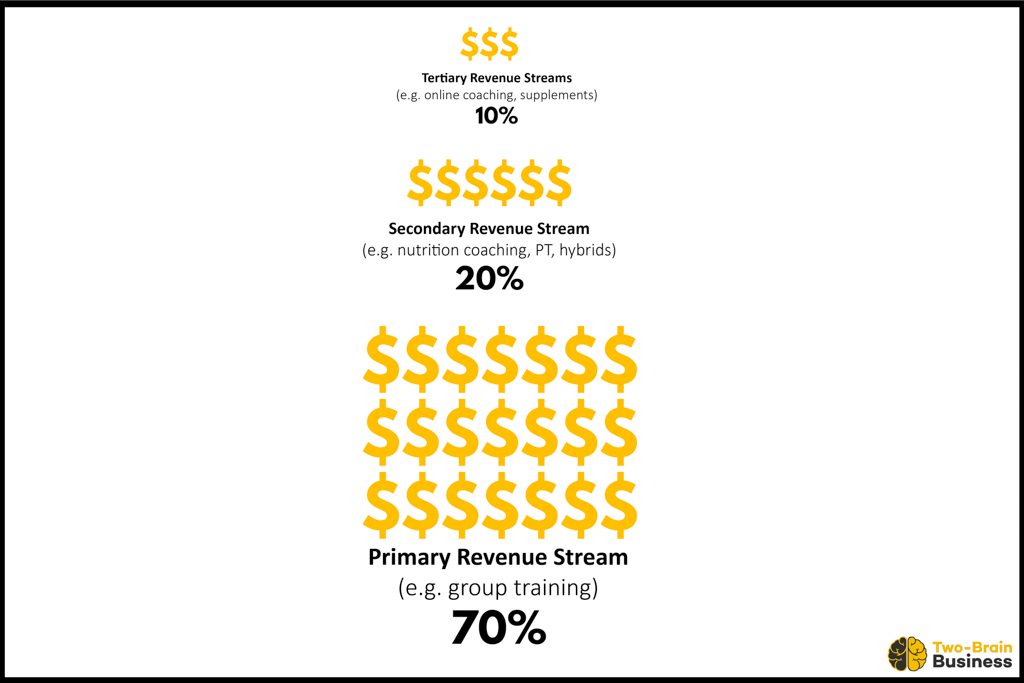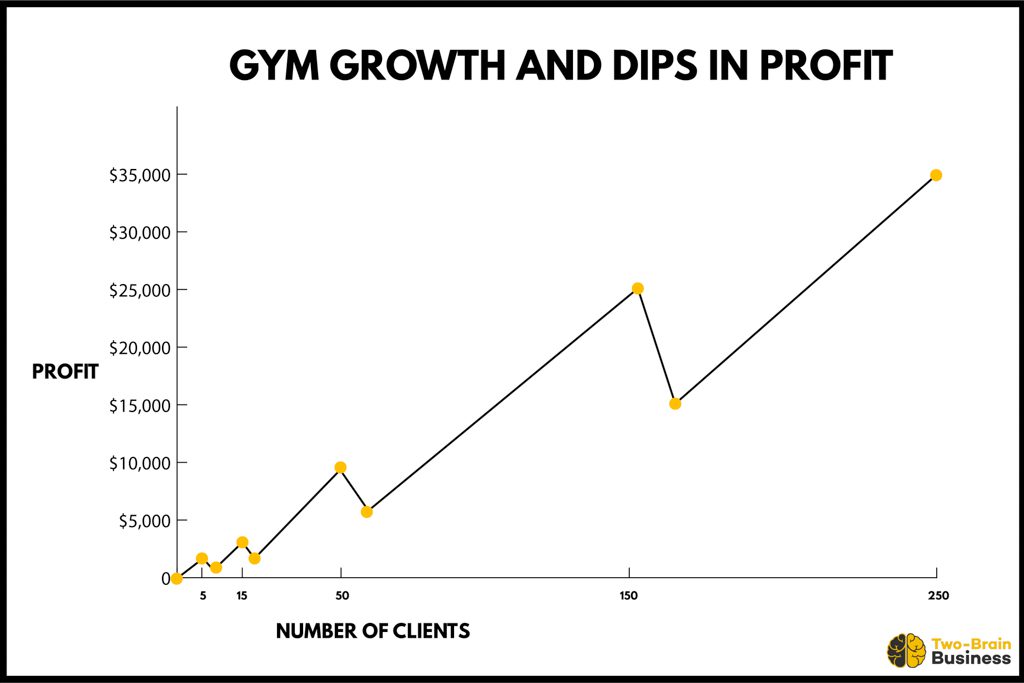When you reach 150 members, you need to change your business model.
With fewer than 150 members, you can still have an owner-operator business. And you can still oversee most things, even if you can’t do everything.
But when you reach 150, you need a different structure. You need a different level of automation and systems. You need plans for everything. You need to understand your numbers more deeply. And you need a plan to retain your clients so you’re not slipping backward.
Over and over again, we hear stories of gyms opening to huge fanfare—”We had 120 people sign up in our first month!” All too often, these gyms are gone in less than a year. Not because the clients ran out of money. Not because the clients ran out of passion for fitness. But because the gym owner didn’t know how to maintain 120 relationships at once.
From our data (the largest data set in the world), we identify the top gyms in the world at each stage of business. Then we pick those gyms apart to find their commonalities in systems, structures, staffing and everything else.
Below, I’ll reveal what profitable gyms with more than 150 members (and retention over nine months) have in common.
The Common Traits
1. A management layer of staff—These are non-delivery roles that run the business: an administrator or general manager, a bookkeeper and, usually, a client success manager (CSM—more on that in the next post in this series).
2. A “triad” plan—Every client in the gym has two primary points of contact: a coach and another member or CSM. Clients need at least two relationships to keep them around. Who would they text in the middle of the night to get support with diet and exercise?
3. A strong brand.
4. A geographically unique model or method—Many of the first CrossFit affiliates had strong territorial advantages. They attracted all the early adopters who were willing to drive across town to do CrossFit. But as more gyms opened in their cities, most of these local flagships failed to grow their models, which meant their new neighbors were selling the exact same thing. That drove down prices. But it wasn’t CrossFit’s fault: It was up to the owners to level up their businesses.
5. Revenue diversity (but not much)—Big gyms with good retention focus hard on being great at two or three things, max. While they have great operations and staff, they don’t have 10 things going on at once. Most have a great group program, a solid personal training option and nutrition coaching—that’s it.

6. At least one full-time coach.
7. A marketing plan—Big gyms with good retention don’t seek out the “new” marketing strategies and execute them. Instead, they do really well at the basics: referrals, Affinity Marketing and some advertising.
8. Trained salespeople—They don’t have to be full-time people. But the owners of large gyms need to know that a potential new client will be signed up, onboarded and cared for even when they’re not involved.
9. Patience—Big gyms didn’t try to jump straight from 0 to 300 members. Their businesses evolved to this point. Most started with a small space and one owner-operator. They grew slowly, maintaining profit and keeping their client core. While all of them made mistakes, none of them made the fatal one: opening too big with no audience and no plan. They minimized the profitability “dips” that kill microgyms.

A Mentor Can Help
If you have fewer than 150 members, you don’t need dedicated salespeople. You don’t need to invent a new model. You probably don’t need a GM. You’re the primary salesperson, and your marketing plan is simpler.
But eventually, you’re going to reach that ceiling. When you do, you’ll need to change how you do things—for the good of your business, for your sanity and, most importantly, for your clients.
We work with gym owners who are optimizing with more than 150 members in our Tinker program. Click here to book a free call.
Other Media in This Series
“By the Numbers: Many Members, Great Retention”
“By the Numbers: Breaking the 150-Client Barrier”

